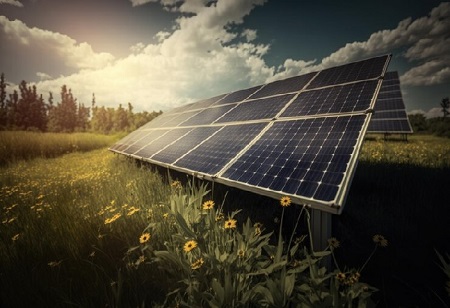
According to the International Energy Agency (IEA), their 2023 World Energy Outlook predicts a significant increase in solar energy's contribution to India's electricity generation. The report anticipates that by 2030, solar sources will account for 18% of India's electricity, a substantial jump from the current 6%. The IEA's outlook for the global energy landscape is also optimistic, with renewables, including solar and wind power, expected to supply half of the world's electricity by 2030. This shift is attributed to the remarkable growth of clean energy technologies like solar, wind, electric vehicles, and heat pumps. The report further projects a considerable surge in the number of electric cars on the roads, potentially reaching almost ten times the current count.
The International Energy Agency (IEA) cautioned that despite progress, greenhouse gas emissions remain at levels insufficient to prevent global temperatures from exceeding the critical 1.5 degree Celsius threshold. In the case of India, the report specifically mentioned that solar energy is projected to increase its share in the country's electricity generation from the current 6% to 18% by 2030. India has set ambitious targets, aiming to achieve 500 gigawatts (GW) of non-fossil fuel-based installed capacity by 2030, which includes approximately 270 GW of solar capacity. As of August, India had already surpassed 70,000 megawatts in solar power generation capacity.
The report also highlighted the implementation of policies in various countries aimed at promoting the diversification of supply chains for clean energy technologies. Notable examples include the Inflation Reduction Act in the United States, the Net Zero Industry Act in the European Union, and India's Production-Linked Incentives scheme. Furthermore, the report emphasized that India leads as the largest source of energy demand growth globally under the Stated Policies Scenario (STEPS), surpassing Southeast Asia and Africa.
We use cookies to ensure you get the best experience on our website. Read more...